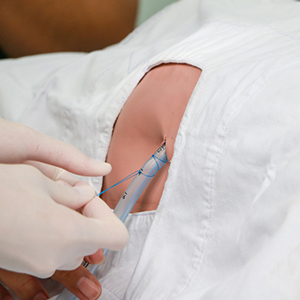Icd drainage
An intercostal drain is a flexible plastic tube that is placed through the chest wall into the pleural space. It is utilized to drain pneumothoraces or effusions from the intrathoracic space. All intercostal drains placed for pleural effusions ought to be real time ultrasound directed.
Preparation:Your doctor will set up an enormous region on your chest, from your armpit down to your mid-region and across to your nipple. Preparation includes cleaning the region and shaving any hair from the inclusion site, if important. Your chest medicine specialist in Hyderabad might utilize an ultrasound to recognize a good site for placing the tube.
Anesthesia: The specialist might infuse a sedative into your skin or vein to numb the region. The drug will assist with making you more comfortable during the chest tube addition, which can be painful. On the off chance that you’re having significant heart or lung medical procedure, you'll likely be given general anesthesia and be taken care of before the chest tube is placed.

Incision: Using a surgical blade, your primary care physician will make a tiny cut between your ribs, close to the upper part of your chest. Where they make the cut rely upon the reason for the chest tube.
Insertion:Your pulmonologist in Pragathi nagar will then, at that point, delicately open a space into your chest cavity and guide the tube into your chest. Chest tubes come in different sizes for various conditions. Your doctor will join the chest tube set up to keep it from moving. A sterile bandage will be applied over the addition site.
Drainage: The tube is then connected to a special one-way drainage system that permits air or liquid to stream out as it were. This keeps the liquid or air from flowing back into the chest cavity. While the chest tube is in, you will presumably need to remain in the medical clinic. A specialist or medical attendant will screen your breathing and check for conceivable air spills.
Newsletter
Subscribe our Newsletter to get latest events and new updates
